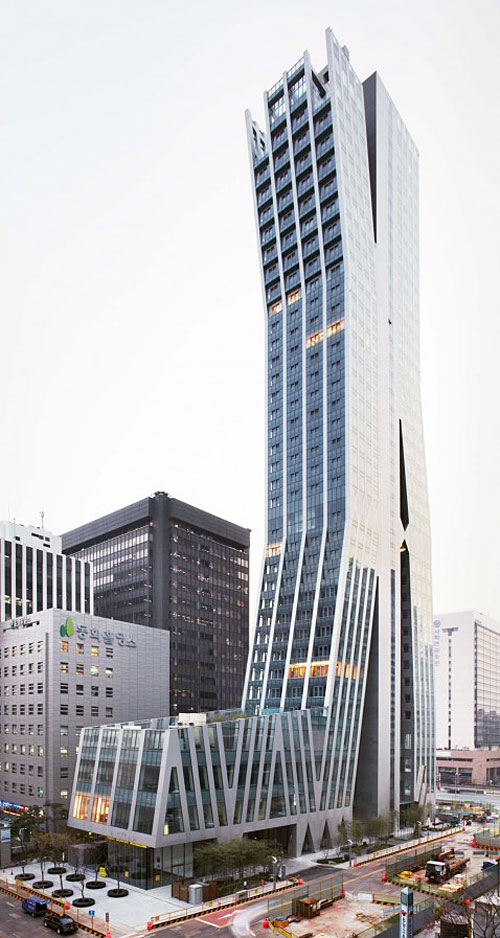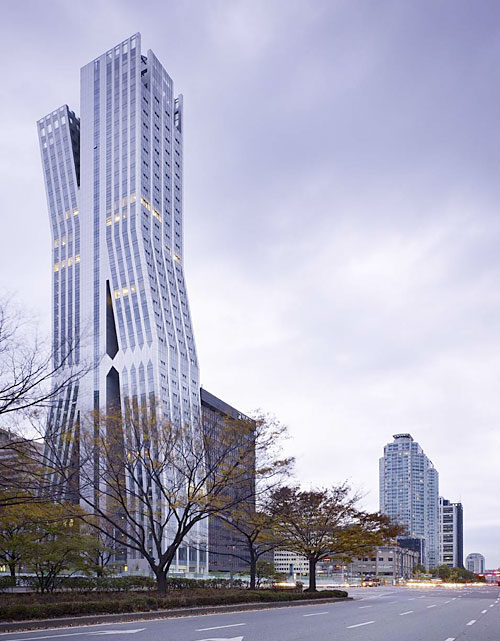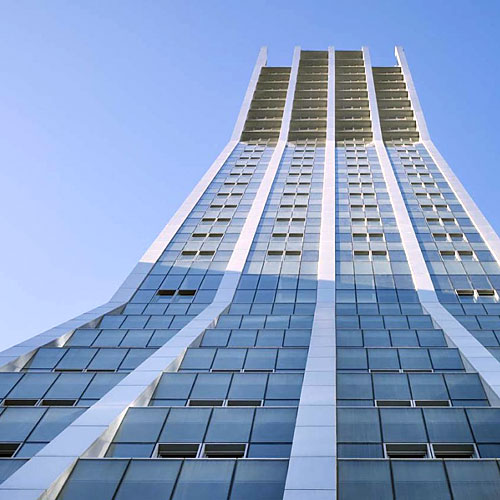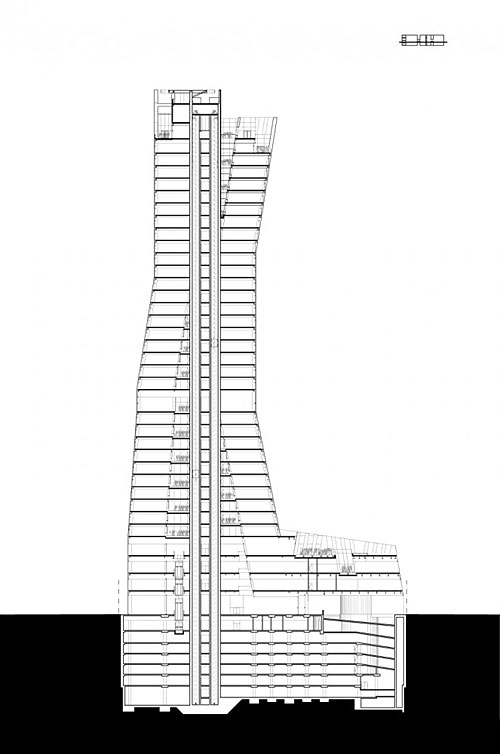
Stocky Tower
Generally, the plan of this tower typology is determined by the maximum site coverage (60% in this case), and the maximum F.A.R. (800%), and is repeatedly stacked vertically. Proportionately, this typology is usually on the stable, short side and thus referred to as a “stocky” tower. In this plan, a tower of 14 floors (800% ÷ 60% = 13.333) is possible. The site is located near the Yeouido National Assembly, in an area that has been developed since the 1980′s and mostly populated with towers built according to this equation to similar height and capacity scales. An urban environment crowded with these types of towers is often monotonous and uninteresting, while the paucity of space between towers results in an oppressive cityscape.
Podium Tower
Prototype 1 (Standard): This type is possible when there is enough vertical allowance. The lower four or five levels, mostly filled with high-profit commercial entities, forming a podium of maximum site coverage. Smaller (and therefore less efficient) floors are stacked repeatedly on top of the podium, using extra vertical allowance to reach its maximum height. The podium’s capacity maximizes value and invigorates the neighborhood, while the slimness of the tower improves lighting and views inside. In this project, the site is by a 100m-wide street that adds extra height allowance, for a possible total of 36 floors.
Prototype 2 (L-shaped): This is a variation of the podium tower; The tower atop the podium faces the street and horizontally forms an L-shape. The tower’s visibility increases from the street, while increased distance from neighboring buildings to the rear improves the overall environment.

Bundle Matrix
The L-shaped podium tower is reorganized and transforms into three vertical elements: three slimmer towers. The central core tower, the adjoined street-side tower, the adjoined rear tower and the podium form an “L” that continues as one element.
The core tower is of reinforced concrete construction, the other two, of steel construction. With the core tower at the center, the slimmer steel construction towers lean at varying angles that still maintain structural soundness. This will create as much distance as possible between the three towers and add outdoor space between them. Because of these spaces, there are many rooms inside the tower with an unusual amount of access and exposure to the outside for a more desirable residential/work environment.

Architects: Mass Studies
Location: Seoul, Korea
Project Team: Minsuk Cho, Kisu Park, Zongxoo U, Younkyoung Shin, Sangkyu Jeon, Jingyoung Ha, Geunmi Ryu, Jieun Lee, Joonhee Lee, Daeun Jeong, Bumhyun Chun, Kiwoong Ko, Hartmut Flothmann, Dongchul Yang, Seongbeom Mo, Byungkyun Kim, Jisoo Kim, Songmin Lee, Vin Kim, Young Kim, Ranhee Kim, Kwangjin Woo, Minho Hwang, Jiyoung Yoon, Chungwhan Park
Structural Engineering: Junwoo Structure
MEP Engineering: HANA Consulting & Engineers
Civil Engineering: CG E&C
Landscaping: Alban Mannisi + Soltos Landscaping
Construction: SK E&C
Client: SK Networks
Site Area: 2,931 sqm
Project Area: 39,898.56 sqm
Design Year: 2006
Construction Year: 2006-2009
Photographs: Iwan Baan, Kyungsub Shin & Yong-Kwan Kim
Mass Studies









